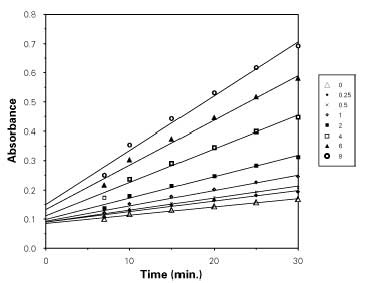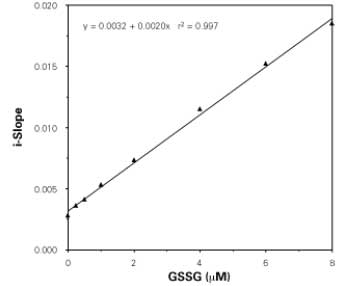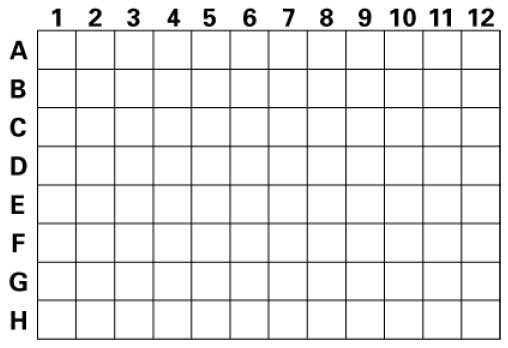354103 Sigma-AldrichGlutathione Assay Kit II
お勧めの製品
概要
| Replacement Information |
|---|
主要スペック表
| Detection Methods |
|---|
| Colorimetric |
価格&在庫状況
| カタログ番号 | 在庫状況 | 包装 | Qty/Pk | 価格 | 数量 | |
|---|---|---|---|---|---|---|
| 354103-1KITCN |
|
ガラスビン | 1 kit |
|
— |
| Product Information | |
|---|---|
| Detection method | Colorimetric |
| Form | 96 Tests |
| Format | 96-well plate |
| Kit contains | 2X MES Buffer, GSSG Standard, Cofactor Mixture, Enzyme Mixture, DTNB, 96-Well Plate, Plate Cover, and a user protocol. Assay requires Metaphosphoric Acid and Triethanolamine to be supplied by the user. |
| Positive control | GSSG |
| Quality Level | MQ100 |
| Applications |
|---|
| Biological Information | |
|---|---|
| Assay range | 0 - 16 µM for GSH or 0 - 8 µM for GSSG |
| Assay time | 3 h |
| Sample Type | Plasma, serum, erythrocyte lysate, tissue samples, and cultured cells |
| Physicochemical Information |
|---|
| Dimensions |
|---|
| Materials Information |
|---|
| Toxicological Information |
|---|
| Safety Information according to GHS |
|---|
| Safety Information |
|---|
| Product Usage Statements |
|---|
| Packaging Information |
|---|
| Transport Information |
|---|
| Specifications |
|---|
| Global Trade Item Number | |
|---|---|
| カタログ番号 | GTIN |
| 354103-1KITCN | 04055977193282 |
Documentation
Glutathione Assay Kit II (M)SDS
| タイトル |
|---|
Glutathione Assay Kit II 試験成績書(CoA)
| タイトル | ロット番号 |
|---|---|
| 354103 |
参考資料
| 参考資料の概要 |
|---|
| Foyer, C.H., et al. 1994. Physiol. Plant. 92, 696. Baillie, T.A. and Slatter, J.G. 1991. Acc. Chem. Res. 24, 264. Baker, M.A., et al. 1990. Anal. Biochem. 190, 360. Inoue, M., et al. 1987. Journal of Protein Chemistry 6, 207. Eyer, P. and Podhradsky, D. 1986. Anal. Biochem. 153, 57. Inoue, M. 1985. in Renal Biochemistry. Kinne, R.K.H. editor. Elsevier Science Publishers B.V. London, 225. Lash, L.H. and Jones, D.P. 1985. Arch. Biochem. Biophys. 240, 583. Griffith, O.W. 1980. Anal. Biochem. 106, 207. Wendel, A. and Cikryt, P. 1980. FEBS Lett. 120, 209. Glutathione: Metabolism and function, Arias, I.M. and Jakoby, W.B. 1976. editors. Raven Press, New York. Tietze, F. 1969. Anal. Biochem. 27, 502. |
カタログ
| タイトル |
|---|
| Kit SourceBook - 2nd Edition EURO |


















